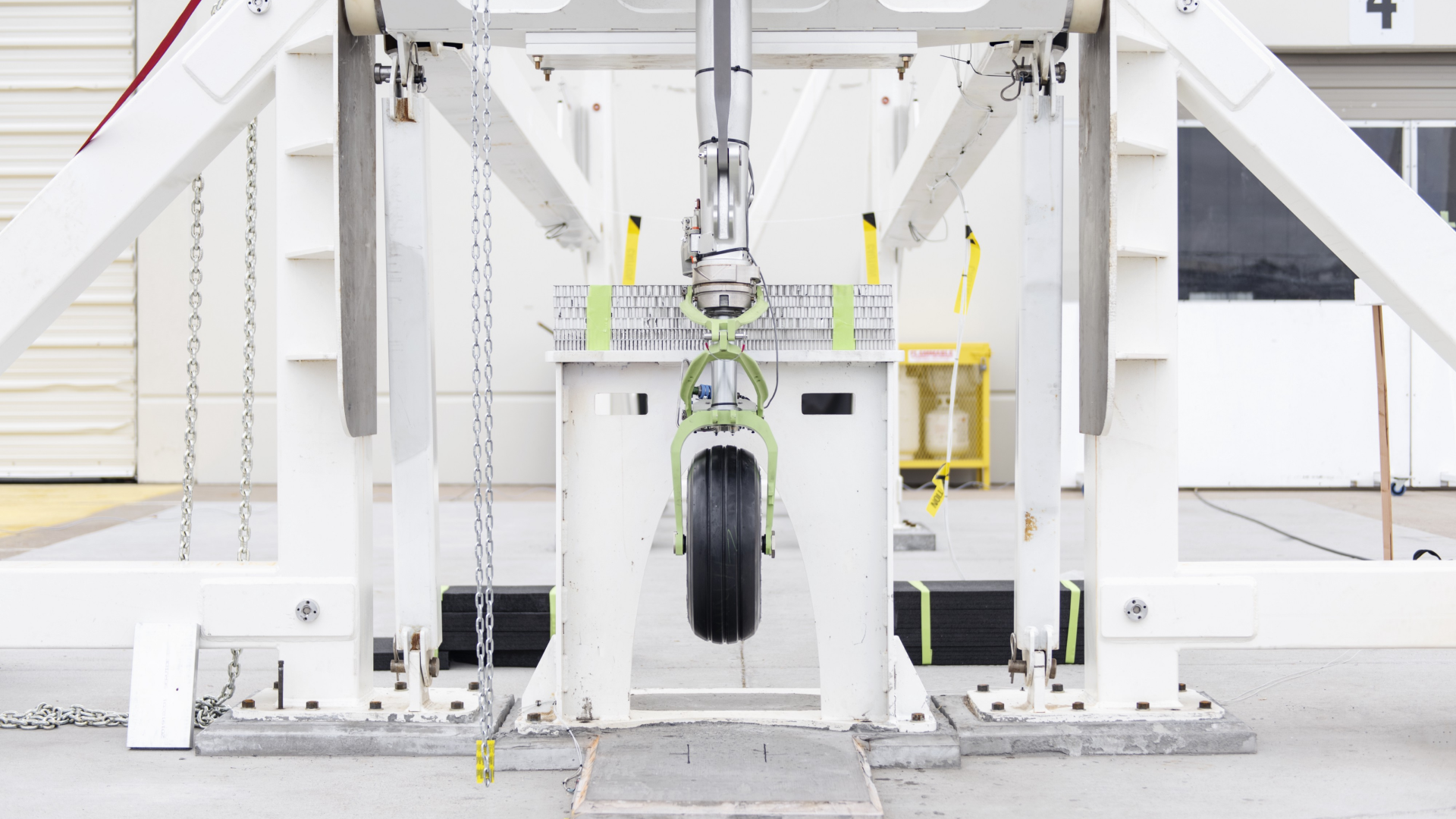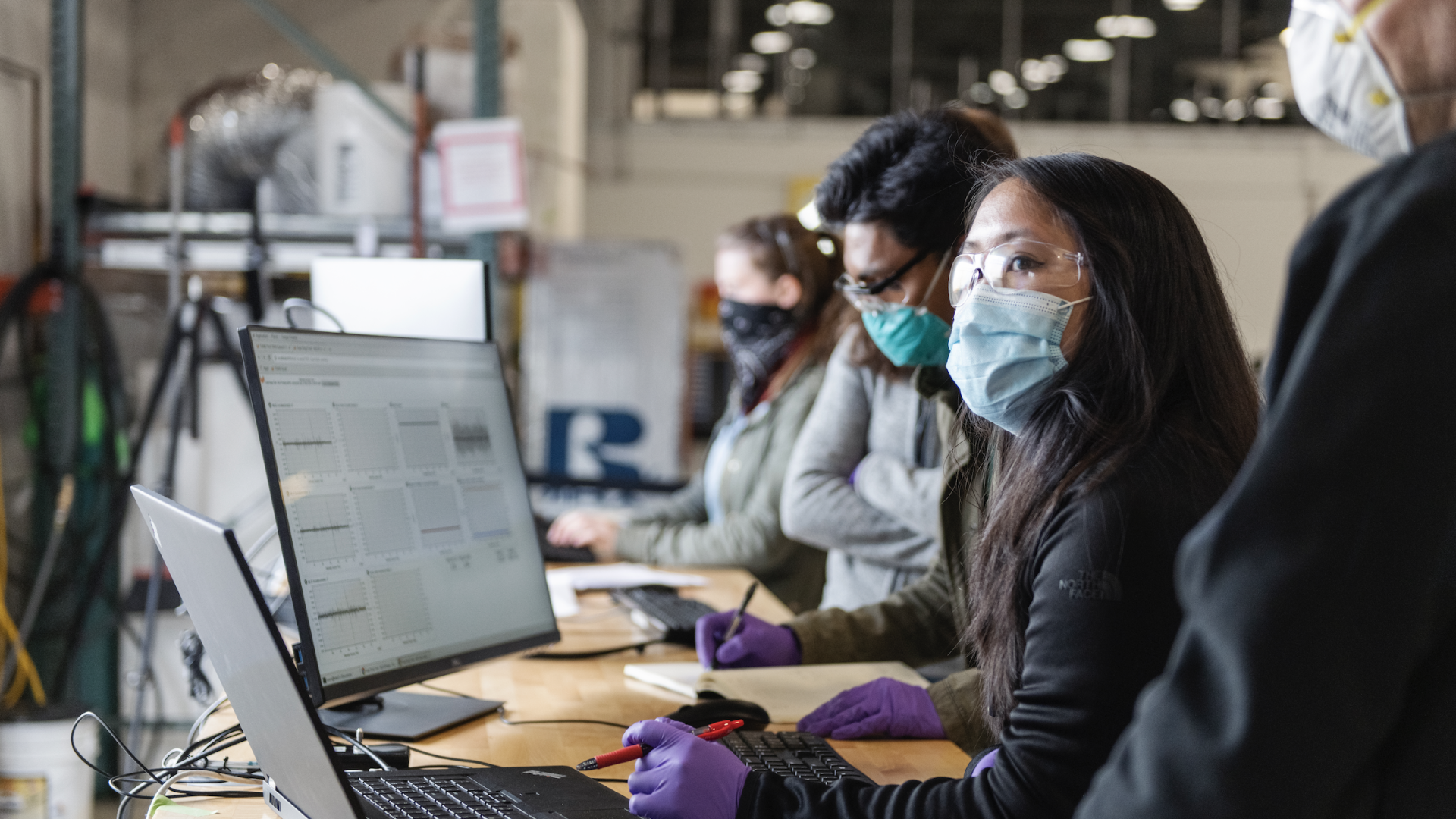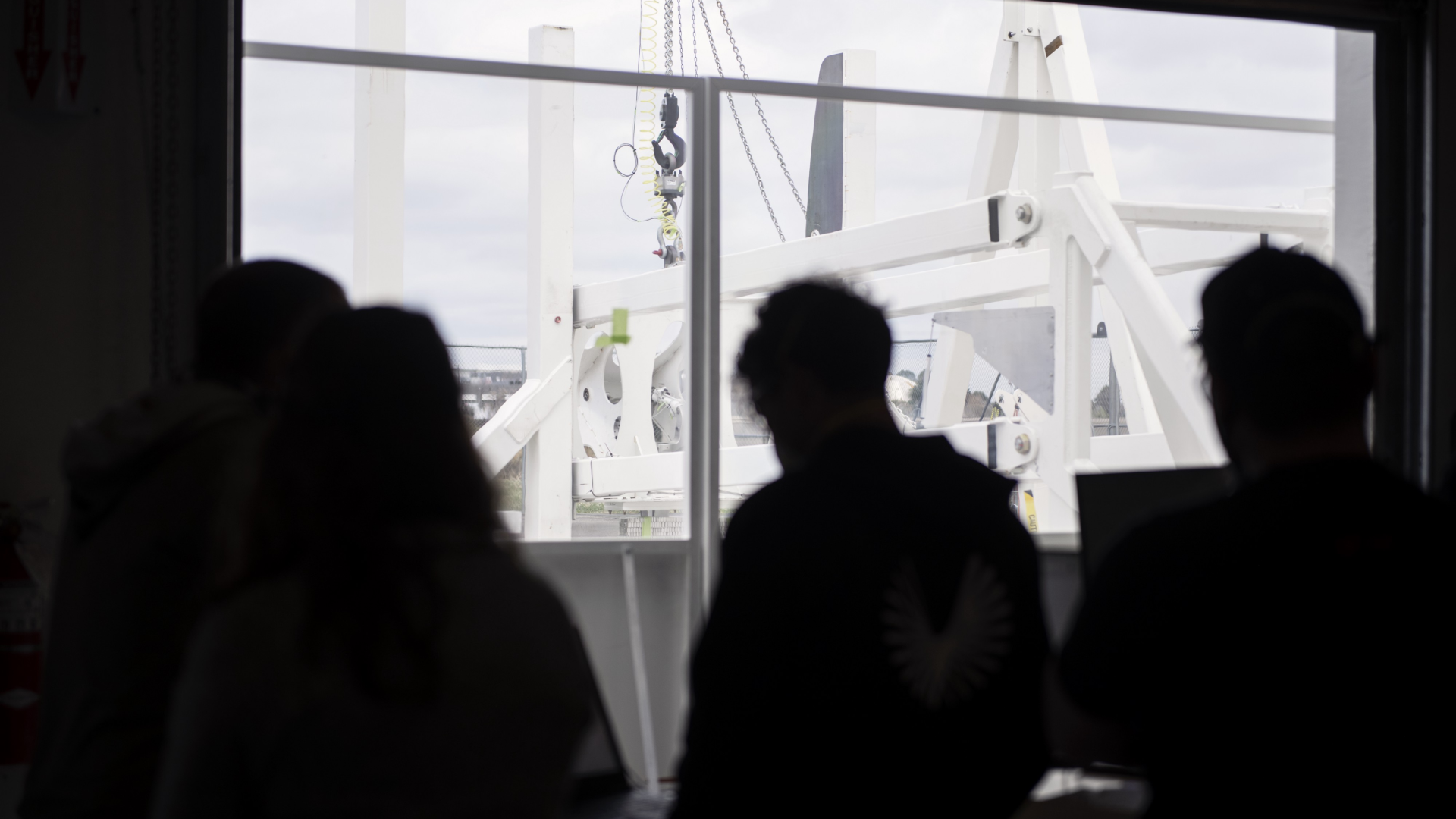A 22 foot gantry and 16 foot drop test structure, designed to hold up to ten tons of weight, arrived at Boom’s hangar earlier this year. The massive fixture quickly became the focal point of XB-1’s landing gear drop tests.
Taking place over a course of multiple weeks, the landing gear drop tests aimed to validate the safety of XB-1’s landing gear components by simulating the most extreme landing conditions. To maintain control of the process, Boom developed, designed, and assembled nearly every element of the testing site and conducted the tests directly in-house.

At most, the nose landing gear is designed to withstand more than 8,000 pounds of force upon landing, whereas each main landing gear can tolerate upwards of 23,000 pounds per tire at a worst case hard landing. “While our pilots are training in the XB-1 simulator to conduct the safest landings, we’re making sure on the ground that everything will perform as expected up to a 212 mph landing,” said test lead TeAnn Nguyen. “XB-1 can withstand a 15 feet per second landing descent rate, but we plan to routinely land at less than 6 feet per second. By contrast, most commercial airliners of today are landing at roughly 3 feet per second.”
Situated in a private outdoor lot behind Boom’s hangar, the testing site is equipped with both the simplest and most advanced technology. To install the drop test rig, the team poured a 12-inch thick concrete pad to anchor everything in place. After that, the mechanical fixture was set using metrology and readied for its first test swing at zero-weight attachment. The process exercised the fixture for the first time and served as a rehearsal for much activity to come.

With plans to test the landing gears under the most extreme simulated landings, the team laid out a number of ‘mini-milestones’ that would need to take place before the final drop test event.
“You can break down this testing process into three large pieces,” said Nguyen. “You first have shakedown tests, which are intended to resolve any unknowns, validate stroke and compression calculations, and stress test our team’s most efficient procedures. Then, we conduct oleo tuning, which includes a series of small-scale drop tests that verify how our analytic model and predictions fit against actual performance. Finally, you have spin up testing, which is where we spin the tire and drop the gear at the same time. We do this incrementally until we conduct a drop with the maximum tire speed comparable to the most aggressive landing.”



The team recently completed all shakedown testing, dropping from a height of just 1-inch but driving 31-percent of limit energy into the gear. “The height from which we drop may not seem like a lot, but when you combine both the height and the speed of the tire, it does not take much to simulate true flight loads,” said Nguyen. “At most, we’ll be dropping the nose landing gear from 1 foot off the ground.”
With more testing to come, the team is taking the highest precautions to mitigate risk and enhance safety. “We are constantly evaluating both the data as it comes in and the physical components,” said Nguyen. “For commercial or military tests, their target is often to push the components literally beyond the breaking point. Since XB-1 is one of a kind, we’re pushing XB-1 to the limits of its performance and that’s an extremely calculated process.”







